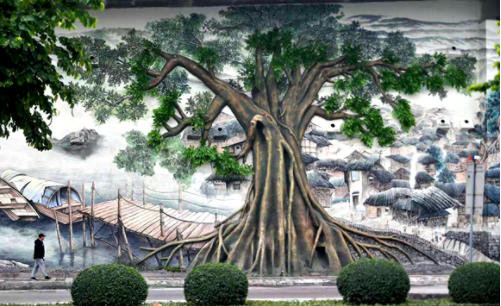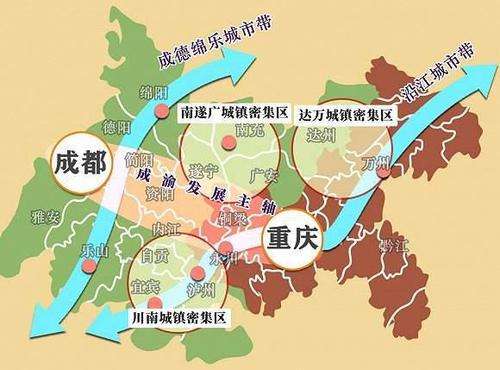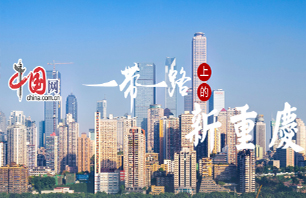 >
双语资讯
>
双语资讯

Giant graffiti wall to brighten up Nanbin Road (Photographed by Guo Xu)
The reporter recently found under the interchange at the south end of the Yangtze River Bridge that a giant graffiti wall blending the landscape of Chongqing with the cultural characteristics of Bayu culture has appeared on Nanbin Road, which makes visitors feel like they are walking through the past and present. The staff of Nanbin Road Construction and Development Center introduced that it is one of the 30 projects designed and constructed in just 20 days for the overall enhancement of the Core Area of Two-river and Four-shore in 2020 as part of the greening and municipal maintenance project around the interchange at the south end of the Shibanpo Yangtze River Bridge.

Residents taking photo of the giant graffiti wall (Photographed by Guo Xu)
“This retaining wall has been worn down over the years.” Zhang Shu, who lives in Tongyuanju, and her sisters were delighted to find the broken retaining wall turned into a painting when they wandered along Nanbin Road. The painting depicts a ferry port under a large Ficus virens, with many peddlers dropping their picks and women and children with bags waiting expectantly and happily for the ferry, looking out over the rolling Yangtze River.“Looking at this painting is like seeing the Chongqing ferry port when I was a child.”

A giant graffiti wall blending the landscape of Chongqing with the cultural characteristics of Bayu culture on Nanbin Road (Photographed by Guo Xu)
It’s not just the retaining wall that has changed.“Previously, there was only a‘spiritual fortress’ sculpture in the upper part of the ageing shrubbery.” The staff pointed to the south end of the Yangtze River Bridge and said that it not only has a single ecological benefit, but also has a slightly monotonous landscape effect. As a result, the project was designed to move the“spiritual fortress” back and plant a 10m-tall crape myrtle on the same site as the main landscape tree. At the same time, under the tree, the imitated natural ecology is used as a guide, and the presbyopic glasses are used to mimic the nature to optimize the spatial pattern of the city and enhance the landscape effect. (Translated by Wang Huixin, Fathom Language Limited)
Editor:Jiang Yiwei











 京公网安备 11010802027341号
京公网安备 11010802027341号